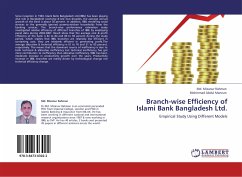For most banks, specially banks which operate in countries where there is undeveloped financial system , branches are still the most dominant distribution channels to deliver banking services to customers, even though other alternative channels of distribution are widely prevalent. At the end of 2010/11, the number of banks operating in the country reached 16 with total branch offices of 863 serving the total population of the country close to 80 million. The number of bank branches is too small compared to the population of the country. What has the expansion of the banking network actually meant? What changes has it brought about in the geographic distributions of deposits and loans? What factors hinder banks to open as many branches as possible to deliver their services to the general public? The author has tried to address these and other issues in this book.
Bitte wählen Sie Ihr Anliegen aus.
Rechnungen
Retourenschein anfordern
Bestellstatus
Storno








